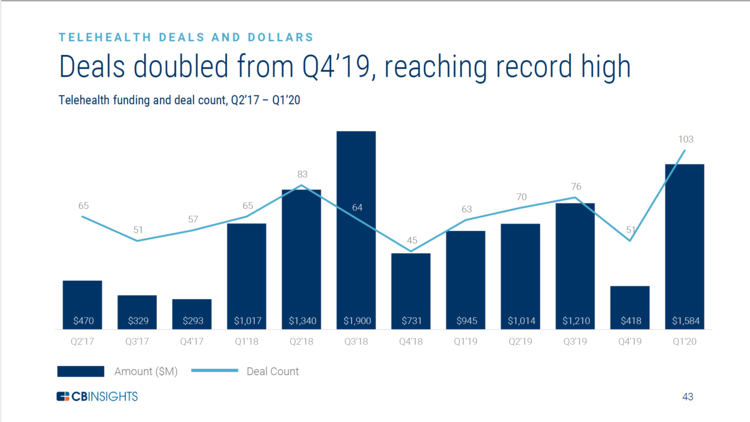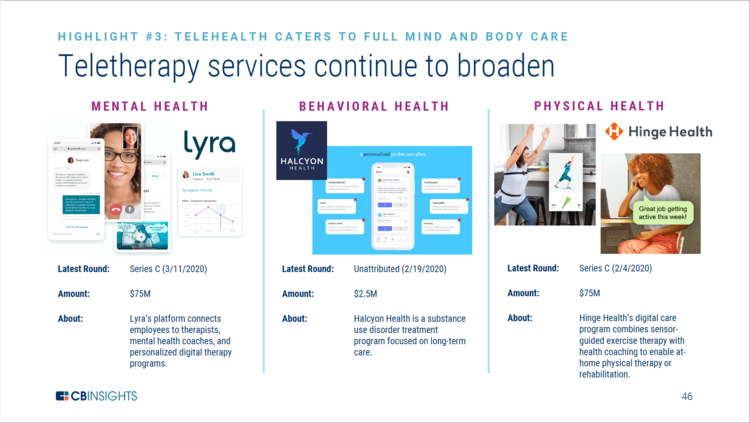Biometry Emerges As The Driver Behind Your Emerging Personal Area Network
COVID-19’s shock has accelerated technology adoption on a new, steeper curve. There is also a tangible sense of a vacuum in Federal crisis management leadership that simultaneously touched everyone’s personal health. Technology that brings “liquidity” to your personal data has the potential to change healthcare at a time when the nation’s trust in data and statistics fade into a fog of partisanship and polarization.

On a personal level, telehealth is an immediate winner. It is now impossible to subtract the telehealth factor from the future of healthcare. For enterprises, the clear winner is software-as-a-service (SAAS) productivity tools supporting remote collaboration and communication.
Trust is undergoing some re-evaluation in the context of a science and biology crisis that is conjoined with an economic crisis. Nicolas Taleb has described COVID-19 as a “white swan” due to its left-tail (worst outcome) level of destruction. This is distinguished from his now-famous description of vulnerabilities from unknown or unexpected threats, black swans. COVID—19 was known and predictable based on history and also because we all watched, and failed to adequately respond, as the virus swept across Asia and Europe in the first two months of 2020. The way we detect and treat illness today is also a white swan method.
Enterprise SAAS technology does more than expand the productivity of the most productive people in the workforce. It also produces a new class of information that is at the intersection of big data and AI, along with the vast computer power available in the cloud to make that data useful. The dynamics of new data (non-mean reverting) is impacting many healthcare sectors like biotech and genomics in a new world of computational biomedicine or cloud biology. But COVID-19 made healthcare a personal crisis for everyone, and there are new personal data sets emerging that could have as big an impact for people’s health as SAAS software has had on re-platforming entire industries with new technology.

Health signals will become omni-channel – and will at least partially replace the static nature of a doctors’ office use of data that has persisted for the last 30-40 years. New innovations mean healthcare is coming closer to the empirical validation of real-time, continuously-monitored medical biometry from the source (individuals) for many conditions and treatments that are both routine and that have deterministic treatment options. Today, people endure a taste of the Soviet Union on the occasion of visiting a physician’s office: a blizzard of manual forms (filled out with infinite frequency), fax machines as technology and waiting rooms potentially infested with contagion. Many doctors operate like a factory with patients supplying the inputs for dollars. In most cases, pricing is capped by centralized bureaucrats who determine the Medicare reimbursement rate. And the quantity of units is limited by the calendar grid.
The line that starts at the Krispy Kreme drive-thru snakes directly to the doctor’s office. The key for the doctor is to gate admission to ensured patients and to find the billing code for a particular clinical ailment, which, for the majority of Americans, means metabolic (lifestyle) disorders. Almost every employee in the physician’s office is geared to billing and schedule (maximization) management. Government mandated Electronic health records (EHR) are for billing, not for patient convenience and portability. P times Q equals revenue, and there has been very little innovation to change this equation. Medical research shows that visits to primary care providers made by adults under the age of 65 have dropped by nearly 25% from 2008 to 2016. Powerful personal computers like iPhones will fill in for some of the negative outcomes over shrinking office visits – and at a lower cost. Perhaps witnessing, in real time, the tragedy of junk food’s metabolic impact to health will lead to changed behavior in ways that having a doctor advise you to eat less and exercise more has not.
The new wave of change can be seen in a company called Teladoc: year-over-year 2020 Q1 revenue grew 41% to $180.8 million and total visits increase 92% to 2.0 million. The signals that doctors labor over are hard to get and expensive for patients in terms of time and money. A diagnosis for treatment relies on small number of inputs (bits) based on lab test results and a few clinical observations. What’s coming is the same diagnosis made much earlier in the disease pathway because it’s based on millions of data points (megabytes) that have already been shown to predict disease across millions of people. The examination of an odd-shaped mole or the evaluation of a battery of blood tests is based on factors that the physician has either memorized from another source or is relying on based on some rule. Nothing (hopefully) is guessed at. His advice is deterministic, yet your risk is probabilistic. It’s a simple truth that dramatically increasing the number of measurements above one or two per year will improve your health outcome.
Today, despite decades of innovation in data analysis and communications, virtually all the data about your personal health is illiquid. Your historical health records are trapped in a Soviet-style manual system. And your most valuable biometric, real-time data that can predict disease is free and available for use, but, much like solar energy, it is wasted every day because it is not captured. Soon, these records will be liquid: exchangeable, portable and subject to healthful analysis that is consumable in real time (and shareable with a remote physician if necessary). This is a form of leverage embedded inside your own biology, and it can be harvested by diagnostic tools that were not computationally feasible just a few years ago. The biometric sensors that will make up a robust data feed for your personal area network are either available (ie. with Apple’s Watch, an FDA-approved medical device) or have been developed and need commercialization like liquid biopsies.
Here’s what’s happening:
· The FDA granted de novo classification in February 2020 for Viz.AI to market an AI-based clinical support software application, ContaCT. The semi-autonomous software analyzes computed tomography (CT) angiogram images for indicators associated with stroke and notifies a neurovascular specialist if an abnormality is detected;
· Apple announces three groundbreaking health studies: In Collaboration with Leading Medical Institutions, Apple to Examine Hearing, Women’s, Mobility and Heart Health (Apple);
· The FDA in April permitted marketing of IDx-DR, a medical device that leverages AI to diagnose eye disease in diabetic adults. The device, developed by IDx, uses deep learning algorithms to screen patients for diabetic retinopathy, a condition that can lead to vision impairment and blindness. The screening process involves a standard retinal imaging process that takes less than a minute;
· Smart devices are moving from fitness tracking to monitoring patients with chronic illnesses;
· Deep learning algorithm does as well as dermatologists in identifying skin cancer (Stanford);
· Apple Watch was effective in detecting AFib, stating that 84% of the smartwatch notifications were accurate in alerting for atrial fibrillation (Fortune);
· At-home blood test devices are coming for a variety of chronic conditions.
Stanford Medicine awarded $2.5 million grant to investigate digital tools for heart health
The ideas presented in this post do not constitute a recommendation to buy or sell any security.
Investors are advised to conduct their own independent research into individual stocks before making a purchase decision. In addition, investors are advised that past stock performance is not indicative of future price action.
You should be aware of the risks involved in stock investing, and you use the material contained herein at your own risk. Neither SIMONSCHASE.CO nor any of its contributors are responsible for any errors or omissions which may have occurred. The analysis, ratings, and/or recommendations made on this site do not provide, imply, or otherwise constitute a guarantee of performance.
SIMONSCHASE.CO posts may contain financial reports and economic analysis that embody a unique view of trends and opportunities. Accuracy and completeness cannot be guaranteed. Investors should be aware of the risks involved in stock investments and the possibility of financial loss. It should not be assumed that future results will be profitable or will equal past performance, real, indicated or implied.
The material on this website are provided for information purpose only. SIMONSCHASE.CO does not accept liability for your use of the website. The website is provided on an “as is” and “as available” basis, without any representations, warranties or conditions of any kind.
Leave a Reply